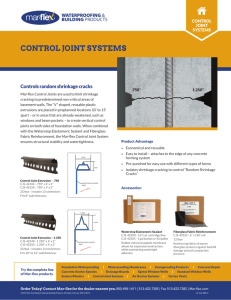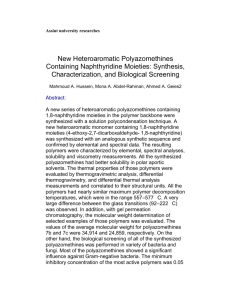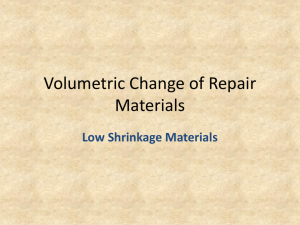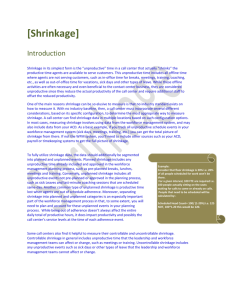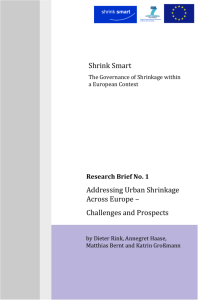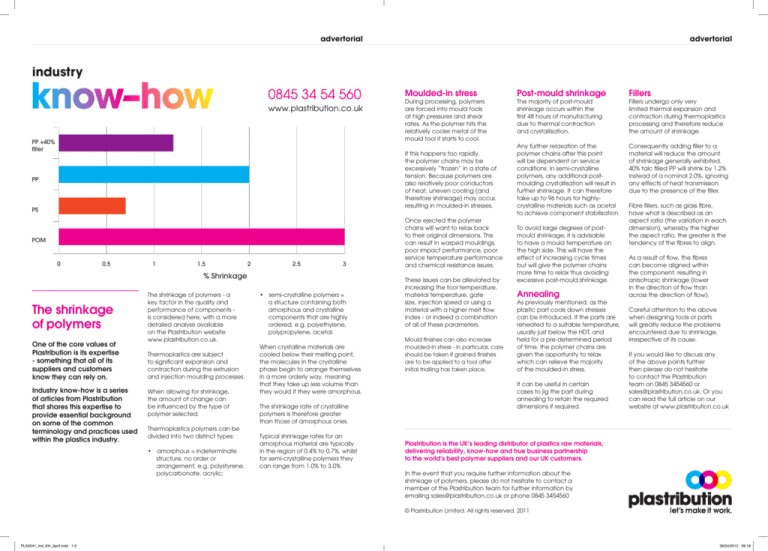
advertorial
advertorial
industry
Moulded-in stress
Post-mould shrinkage
Fillers
If this happens too rapidly,
the polymer chains may be
excessively “frozen” in a state of
tension. Because polymers are
also relatively poor conductors
of heat, uneven cooling (and
therefore shrinkage) may occur,
resulting in moulded-in stresses.
Any further relaxation of the
polymer chains after this point
will be dependent on service
conditions. In semi-crystalline
polymers, any additional postmoulding crystallisation will result in
further shrinkage. It can therefore
take up to 96 hours for highlycrystalline materials such as acetal
to achieve component stabilisation.
Consequently adding filler to a
material will reduce the amount
of shrinkage generally exhibited.
40% talc filled PP will shrink by 1.2%
instead of a nominal 2.0%, ignoring
any effects of heat transmission
due to the presence of the filler.
During processing, polymers
are forced into mould tools
at high pressures and shear
rates. As the polymer hits the
relatively cooler metal of the
mould tool it starts to cool.
PP +40%
filler
PP
PS
POM
0
0.5
1
1.5
2
2.5
3
% Shrinkage
The shrinkage
of polymers
One of the core values of
Plastribution is its expertise
- something that all of its
suppliers and customers
know they can rely on.
Industry know-how is a series
of articles from Plastribution
that shares this expertise to
provide essential background
on some of the common
terminology and practices used
within the plastics industry.
The shrinkage of polymers - a
key factor in the quality and
performance of components is considered here, with a more
detailed analysis available
on the Plastribution website
www.plastribution.co.uk.
Thermoplastics are subject
to significant expansion and
contraction during the extrusion
and injection moulding processes.
When allowing for shrinkage,
the amount of change can
be influenced by the type of
polymer selected.
Thermoplastics polymers can be
divided into two distinct types:
• amorphous = indeterminate
structure, no order or
arrangement, e.g. polystyrene,
polycarbonate, acrylic;
• semi-crystalline polymers =
a structure containing both
amorphous and crystalline
components that are highly
ordered, e.g. polyethylene,
polypropylene, acetal.
When crystalline materials are
cooled below their melting point,
the molecules in the crystalline
phase begin to arrange themselves
in a more orderly way, meaning
that they take up less volume than
they would if they were amorphous.
The shrinkage rate of crystalline
polymers is therefore greater
than those of amorphous ones.
Typical shrinkage rates for an
amorphous material are typically
in the region of 0.4% to 0.7%, whilst
for semi-crystalline polymers they
can range from 1.0% to 3.0%
Once ejected the polymer
chains will want to relax back
to their original dimensions. This
can result in warped mouldings,
poor impact performance, poor
service temperature performance
and chemical resistance issues.
These issues can be alleviated by
increasing the tool temperature,
material temperature, gate
size, injection speed or using a
material with a higher melt flow
index - or indeed a combination
of all of these parameters.
Mould finishes can also increase
moulded-in stress - in particular, care
should be taken if grained finishes
are to be applied to a tool after
initial trialling has taken place.
The majority of post-mould
shrinkage occurs within the
first 48 hours of manufacturing
due to thermal contraction
and crystallisation.
To avoid large degrees of postmould shrinkage, it is advisable
to have a mould temperature on
the high side. This will have the
effect of increasing cycle times
but will give the polymer chains
more time to relax thus avoiding
excessive post-mould shrinkage.
Annealing
As previously mentioned, as the
plastic part cools down stresses
can be introduced. If the parts are
reheated to a suitable temperature,
usually just below the HDT, and
held for a pre-determined period
of time, the polymer chains are
given the opportunity to relax
which can relieve the majority
of the moulded-in stress.
It can be useful in certain
cases to jig the part during
annealing to retain the required
dimensions if required.
Fillers undergo only very
limited thermal expansion and
contraction during thermoplastics
processing and therefore reduce
the amount of shrinkage.
Fibre fillers, such as glass fibre,
have what is described as an
aspect ratio (the variation in each
dimension), whereby the higher
the aspect ratio, the greater is the
tendency of the fibres to align.
As a result of flow, the fibres
can become aligned within
the component, resulting in
anisotropic shrinkage (lower
in the direction of flow than
across the direction of flow).
Careful attention to the above
when designing tools or parts
will greatly reduce the problems
encountered due to shrinkage,
irrespective of its cause.
If you would like to discuss any
of the above points further
then please do not hesitate
to contact the Plastribution
team on 0845 3454560 or
sales@plastribution.co.uk. Or you
can read the full article on our
website at www.plastribution.co.uk
Plastribution is the UK’s leading distributor of plastics raw materials,
delivering reliability, know-how and true business partnership
to the world’s best polymer suppliers and our UK customers.
In the event that you require further information about the
shrinkage of polymers, please do not hesitate to contact a
member of the Plastribution team for further information by
emailing sales@plastribution.co.uk or phone 0845 3454560
© Plastribution Limited. All rights reserved. 2011
PLA0041_Ind_KH_April.indd 1-2
28/04/2012 09:18





